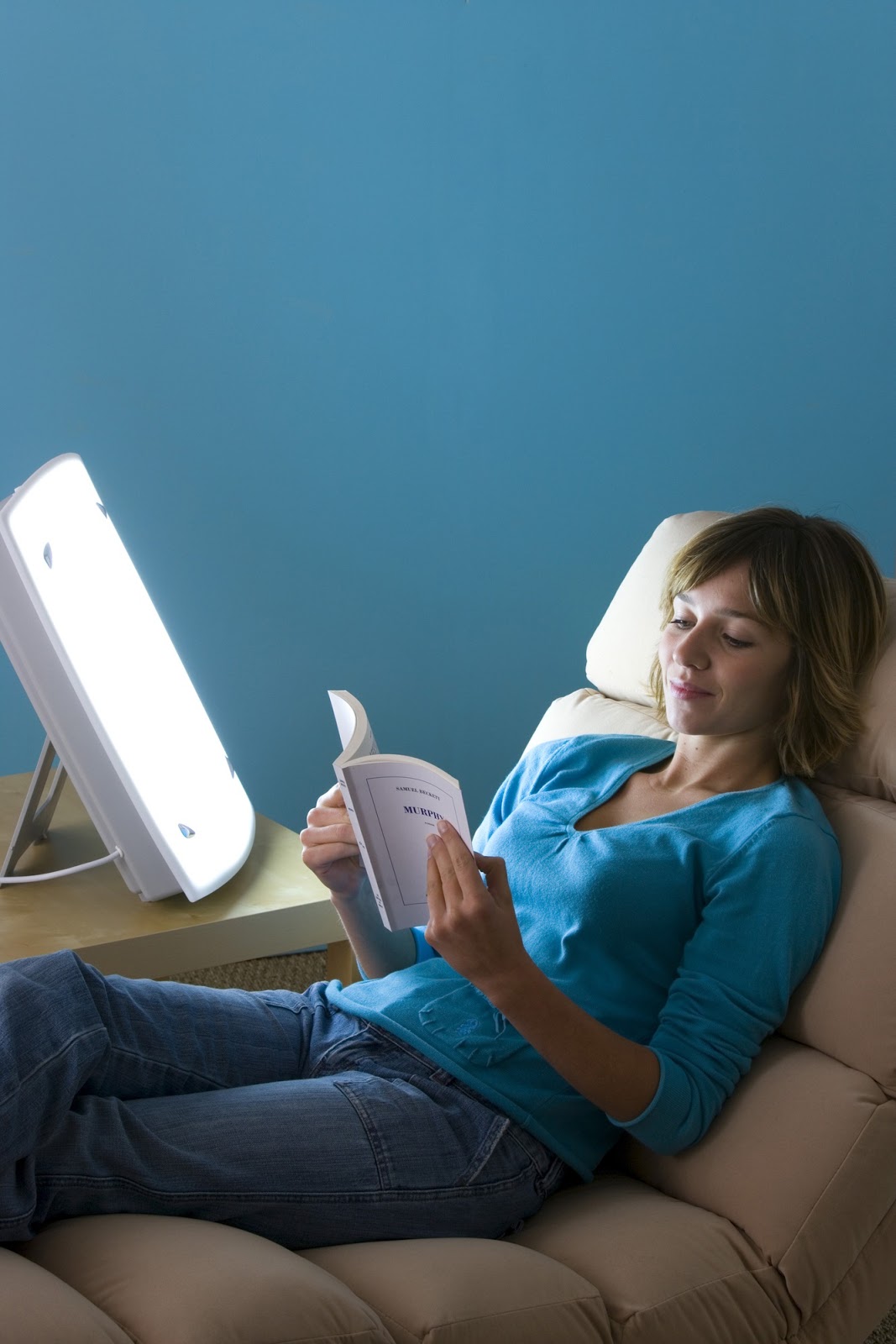Light therapy, also known as phototherapy, is a non-invasive, drug-free treatment involving the exposure of the skin to specific wavelengths of light. The treatment may be performed by therapists to treat seasonal affective disorder (SAD), jet lag, and sleep disorders in patients, as well as by estheticians and dermatologists for skin-rejuvenating purposes.

The light that patients are exposed to is brighter than indoor light, but not as bright as direct sunlight. Its purpose is to replace lost sunlight exposure. Clinical trials using light therapy showed promise for improving skin complexion, skin feeling, and collagen density.
Still, it is generally recommended that light therapy be used in conjunction with the best skincare products for your skin type and needs.
Types of Light Therapy
There are a few different types of light therapy. Some types involve utilizing wavelengths in the visible light spectrum. The wavelengths are more commonly referred to by the color they display. Other therapies use the heat given off in the invisible light spectrum.
Red Light
Red light therapy is a therapeutic technique that uses red low-level wavelengths from 620 nanometers (nm) to 700nm. It aims to improve skin conditions, scarring, and signs of aging — including wrinkles and age spots.
Yellow Light
Yellow (or amber) light therapy encompasses the range of wavelengths between 570-620nm. It helps in maintaining the epidermis, such as by combatting redness, spider veins, or rosacea, soothing sensitive or inflamed skin, and minimizing sun damage.
Blue Light
Blue light therapy emits wavelengths between 405-420nm. The light used is a natural violet or blue-colored light. The main use of blue light therapy is in reducing acne and precancerous lesions, as well as scars and sunspots. There is also research on blue light therapy’s effectiveness in treating SAD or depression.
Near-Infrared Light
Unlike the other therapies mentioned, near-infrared light therapy relies on the heat emitted from light waves. It generally refers to wavelengths between 800-2,500nm. Near-infrared light therapy is known for its ability to activate anti-inflammatory processes.
Near-infrared light therapy requires the use of infrared radiation to produce local heat. The other types of therapeutic techniques mentioned rely on light-emitting diodes, or LEDs. The latter is a non-thermal technique.
Pros of Light Therapy
Experts credit the role of the mitochondria in skin cells for the potential benefits of low-level light therapy. The mitochondrial chromophores allow skin cells to absorb light. A study in the journal Seminars in Cutaneous Medicine and Surgery notes how the skin cells absorb light particles helps them to produce adenosine triphosphate, the energy source for all cells. The extra energy is thought to help cells better respond to damage and rejuvenate themselves.
The benefits of light therapy include:
-
- Promotes collagen production: Red light therapy promotes collagen production, helping skin maintain elasticity and firmness, and help preserve a more youthful appearance.
- Activates the lymphatic system: Infrared light therapy activates the lymphatic system, helping the body’s natural removal of toxins and waste.
- Assists in wound healing: Red light therapy assists in wound healing by minimizing inflammatory cells.
- Helps with chronic skin conditions: Light therapy has many applications in dermatology, such as helping with chronic skin conditions.
- Reducing acne: Blue light therapy is effective in reducing mild-to-moderate inflammatory acne, as well as in improving general skin health.
Cons of Light Therapy
Many of the drawbacks of light therapy revolve around the fact that it is a very new field. With limited studies being conducted, it is hard to prove the long-term efficacy of such therapy or establish thorough guidelines. Moreover, light therapy may be appropriate for some skin types but not others — such as sensitive skin.
The cons of light therapy include:
-
- Lack of guidelines: There are no prescribed guidelines for the use of light therapy in treating any specific conditions. While doctors or dermatologists will prescribe or recommend an exact frequency and duration of exposure, needs may vary.
- Limited studies: Since the field is still emerging, limited studies are demonstrating the efficacy of light therapy. Studies also tend to be small.
- Not for everyone: Light therapy may not be suitable for everyone, especially people who are extremely sensitive to light, have sensitive skin, or otherwise have skin allergies.
- Long term effects are unknown: Light therapy is proven to be effective in the short term, but its long term benefits are unknown.
- It is not a cure: Although light therapy has its benefits, it is not considered a cure for any diseases or conditions.
Is Light Therapy Safe?
Light therapy is generally considered safe, and can be used in conjunction with other treatments. Eyestrain or visual disturbances may occur following exposure, but tend not to last long. If symptoms do not get better or get worse, you should follow up with your doctor, therapist, or dermatologist.
Alternatives and Complements to Light Therapy
Incorporating skincare products into your daily routine is one potential alternative, as well as a complementary remedy. Anti-aging creams, for instance, may help reduce the appearance of wrinkles around the eyes. Firming or collagen creams may help with improving or restoring the elasticity of the skin.
Light therapy is not a be-all and end-all treatment for any skin condition. It is always wise to reach out to your doctor or dermatologist before self-administering the therapy. These professionals can give you more information on whether you should seek out alternatives to light therapy, or find complementary remedies.

